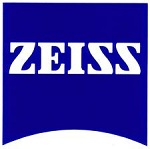Non-invasive analytical techniques such as Raman microspectroscopy, X-ray fluorescence spectroscopy, fiber optic reflectance spectroscopy and infrared microspectroscopy are effective in characterizing materials.
However, they generally provide surface data or mixed atomic data of all layers. In order to detect and characterize the layered structure of a painting, cross-section sample analysis offers a suitable solution.
Correlative Light and Electron Microscopy
Correlative Light and Electron Microscopy (CLEM) is the most convenient way for examining cross-section samples because it integrates the chemical and structural analysis of the scanning electron microscope (SEM) equipped with energy dispersive X-ray spectrometer (EDS) with the optical properties of light microscopy (LM).
SEM-EDS offers information on morphology and composition of pigment particle at high spatial resolution within diverse layers, while LM provides the optical appearance of the samples’ layered structures. In this application note, the cross-section sample analysis of an oil painting is discussed in detail.
Cross-Section Sample Analysis of 18th Century Painting
An Italian artist, Sabastiano Conca created the painting ‘The Madonna Appearing to St. Philip Neri’ in 1740. The painting has been restored earlier; however, a number of fills in the form of white patches in the X-radiograph can be seen clearly.
This radiograph also indicates that lead white pigment could have been used over the lower area of the painting during the prior restoration work. The pigment was probably used to cover damages.

Figure 1. The Madonna Appearing to St. Philip Neri, 1740, Sabastiano Conca, oil on canvas.

Figure 2. Corresponding X-radiograph. Arrows indicate the sampling locations.
Sample Preparation and Imaging
From the lower area of the painting that has cracks or losses, five samples ranging from -100 to 200 pm were removed. The cracks are marked by arrows as shown in figure 1. The cross-section samples were positioned in a sample holder, which has been exclusively designed for CLEM.
This sample holder can be employed to shift the samples between the SEM and LM in an easy and rapid manner. The microscope features an AxioCam MRc5 digital camera to capture the images. Then, darkfield images of the regions of interests were obtained in the reflected light mode.
The sample holder, which is mounted with cross-section samples, was then moved to an EVO MA15 variable pressure SEM. The SEM is integrated with detectors for back-scattered electron, secondary electron, EDS (Bruker) and variable pressure secondary electron.
Using the back-scattered electron detector, SEM images were then obtained at15 kV acceleration voltage. In addition, a full spectrum EDS mapping of the same region was conducted to give elemental characterization of the region of interests.
Experimentation and Results
Under the light microscope, comparable layered structures were identified for all the cross-section samples. The restoration paint layer was exposed through optical microscopy and was found to be of similar color as the corresponding paint layer(s) in all the samples. This confirmed that the restorer has reproduced the color of the original painting in these areas.
An auto-fluorescence (X >488 nm) image and a darkfield image of the cross-section sample S5 are illustrated in figure 3. The layered structures can be viewed in both the images. Two layers of original paint are present in this particular area that can be seen clearly in the auto-fluorescence image owing to their differing luminescence.
The bright areas in the back-scattered electron image as shown in figure 4 match with the lead map in the corresponding figure. This indicates that lead white is present in the opaque lead white fill layer and was also mixed to varying degrees in all other layers.

Figure 3. Darkfield (left) and auto-fluorescence (X >488 nm) (right) Images of the cross-section sample S5.
Considering the different colors, red ochre is responsible for the red color of the ground layer, while yellow ochre was probably utilized in both restored and original paint layers.
EDS mapping also showed calcium, silicon, potassium, aluminium, sodium and magnesium in the ground layer, indicating the standard silicate and clay mixture of red ochre, gypsum and chalk that are typical of painting ground layers.

Figure 4. SEM images from cross-section sample S5. a) BSE image, EDS mapping of b) lead, c) iron, and d) elements typical of chalk or gypsum and clays (Ca, Al, Si, K, Na, Mg).

Figure 5. CLEM comparison of exact location on the cross-section sample S5 with (a) darkfield, (b) BSE, and a (c) 50:50 mixture of darkfield and BSE images. Arrows indicate translucent particles (darkfield) containing lead (BSE).
In order to realize quick and convenient correlative microscopy, "Shuttle & Find" allows exact relocation of the regions of interest between the scanning electron microscope and light microscope. Comparison of the two images shows that some bright spots from the back-scattered electron image are transparent in the darkfield image marked by arrows in the above figures.
Conclusion
“Shuttle & Find” is a correlative microscopy technique that makes cross-section sample analysis easy, fast, accurate and reliable. The LM images of the cross-section samples collected from the 18th century Conca painting indicates the presence of original paint layers, which have been covered during a previous restoration work, and also suggest that the original painting is probably similar to the restored image.

This information has been sourced, reviewed and adapted from materials provided by Carl Zeiss Microscopy GmbH.
For more information on this source, please visit Carl Zeiss Microscopy GmbH.